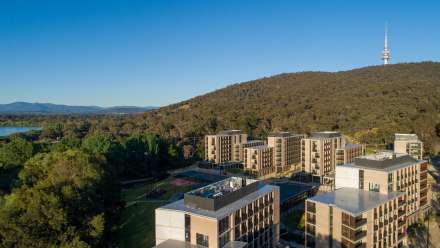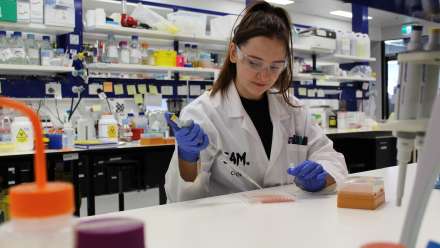How healthy are the leaves loved by iconic Aussie folivores?
Since we typically cannot measure the nutritional quality of every tree in a landscape, we need statistics to help us identify the best way to subsample so we can make inferences on a larger scale.
With a research focus on factors that influence the distribution and abundance of threatened species, Research Fellow Dr Kara Youngentob says statistics are essential to her work.
Dr Youngentob, from the Fenner School of Environment and Society, The Australian National University (ANU) College of Science, says her research involves looking at landscape-scale variations in the nutritional quality of food for leaf-eating animals.
Statistics are fundamental to this type of work, Dr Youngentob says, and play a critical role in experimental design, analysis and data interpretation.
"Since we typically cannot measure the nutritional quality of every tree in a landscape, we need statistics to help us identify the best way to subsample so we can make inferences on a larger scale," Dr Youngentob says.
"We also rely on statistics to interrogate the complex, multi-dimensional datasets generated from using spectroscopy to estimate particular foliar chemical compounds."
When collaborating with statisticians at the ANU Statistical Consulting Unit (SCU), Dr Youngentob says it has always been a true partnership.
"We included the SCU stats collaborators as co-authors in our published results," Dr Youngentob says.
"Although statistics courses and other training opportunities through ANU are helpful and result in more productive collaborations, they cannot replace the level of expertise and insight that comes from working closely with an accredited statistician."
Dr Youngentob's research is crucial for informing habitat assessment policy and landscape management decisions for some of the most iconic Australian folivores, like the koala and the greater glider.
The project is funded through local councils, state and federal governments, as well as NGOs like the Minderoo Foundation and the World Wildlife Fund (WWF).
"Food is an essential element of habitat quality but it can be difficult to measure food quality at scales that are meaningful to populations," Dr Youngentob says.
"Solving this challenge requires close collaborations across multiple disciplines, including nutritional ecology, animal physiology, landscape ecology, remote sensing and statistics."
Dr Youngentob says that because statisticians can help make sure experiments and sampling strategies are fit for purpose, they should be consulted right from the start, through to the communication and publication of results.
"I highly recommend that researchers collaborate with statisticians and urge them to do so from the beginning of their project," she says.
"As a scientist, there is nothing worse than spending time, energy and funding on collecting data that cannot be used to answer the question you are hoping to answer.
"I have learned an enormous amount working closely with statisticians, and we would not be able to do the work that we do without them."


